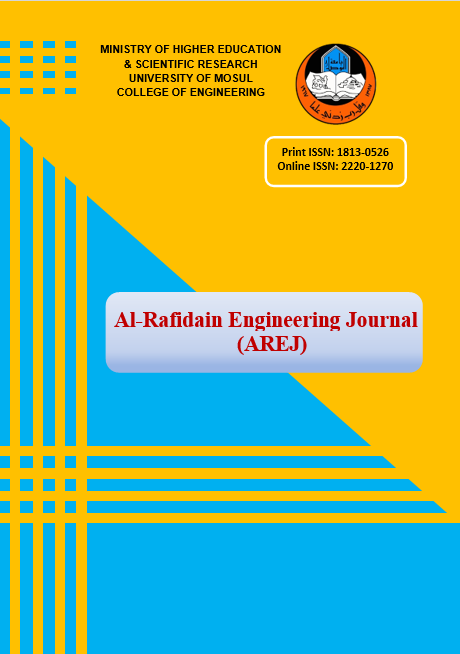Abstract
The influence of a transverse crack upon the dynamic behavior of a rotating
shaft is studied. Introduction of such a crack results in lower transverse natural
frequencies due to the added local flexibility. The strain energy release function is
related to the compliance of the cracked shaft that is to the local flexibility due to
introduction of crack. This function is related to the stress intensity factor, which for
transverse of a shaft with a crack has a known expression. As a result, the local
flexibility of the shaft due to the presence of the crack has been computed. This result,
can be further utilized to yield the dynamic response of a shaft with complex geometry.
Starting from the equation of motion for the shaft under bending to derive the
expression of calculating the natural frequency of the shaft.
Two cases of fixing the shaft are suggested in this study to investigate and
analyze the vibration characteristics of the shaft with and without cracks. The
fundamental natural frequency showed strong dependence on the crack depth, This
dependence is smaller as the order of the frequency increase. Experimental results are in
close agreement with those practical from the theoretical analysis. Finally, the results
showed that the change in dynamic response due to the crack is high enough to allow
the detection of the crack and estimation of its magnitude.
shaft is studied. Introduction of such a crack results in lower transverse natural
frequencies due to the added local flexibility. The strain energy release function is
related to the compliance of the cracked shaft that is to the local flexibility due to
introduction of crack. This function is related to the stress intensity factor, which for
transverse of a shaft with a crack has a known expression. As a result, the local
flexibility of the shaft due to the presence of the crack has been computed. This result,
can be further utilized to yield the dynamic response of a shaft with complex geometry.
Starting from the equation of motion for the shaft under bending to derive the
expression of calculating the natural frequency of the shaft.
Two cases of fixing the shaft are suggested in this study to investigate and
analyze the vibration characteristics of the shaft with and without cracks. The
fundamental natural frequency showed strong dependence on the crack depth, This
dependence is smaller as the order of the frequency increase. Experimental results are in
close agreement with those practical from the theoretical analysis. Finally, the results
showed that the change in dynamic response due to the crack is high enough to allow
the detection of the crack and estimation of its magnitude.
Abstract
العرضي على السلوك الداينميكي للعمود الدوار. ابتداءًا من معرفةان وجود الشق في العمود يقلل من قيمة الترددات الطبيعية العرضية من خلال وجود المرونة الموقعية المتكونةبمنطقة الشق . كما ان دالة طاقة الانفعال المتحررة والمتعلقة بمنطقة الشق من خلال مطاوعة الشق للعمودالدوار خلال وجود المرونة الموقعية ، فإن هذه الدالة مرتبطة بمعامل شدة الاجهاد كتعبير لوجود الشق العرضي. لذا فقد تم حساب المرونة الموقعية للعمود خلال منطقة الشق . حيث ان النتائج التي تم الحصول عليها يمكنالاستفادة منها في تحديد الاستجابة الداينميكية للعمود ذات التركيب المعقد .ابتداءًا من معادلة الحركة للعمود المتعرض للانحناء فقد تم تحليل وحساب معادلة التردد الطبيعيلظروف تثبيت العمود . وقد اعتمدت الدراسة من خلال اخذ حالتين لتثبيت العمود ومن ثم دراسة وتحليلB & K ) الصفات الاهتزازية للعمود في حالة وجود وعدم وجود شق وذلك باستخدام جهاز محلل الاهتزازاتلتحليل الموجات الاهتزازية حيث بينت النتائج أن التردد الطبيعي الاساسي يعتمد بشكل كبير (Type 2515على عمق الشق وهذا الاعتماد يقل كلما زادت قيمة الأس للتردد نفسه .بينت النتائج أخيرًا أن التغير في الاستجابة الداينميكية خلال وجود الشق يعد كافيًا في الكشف وتقديرقيمة الشق
